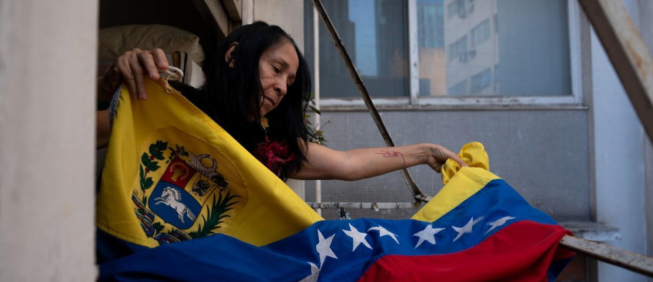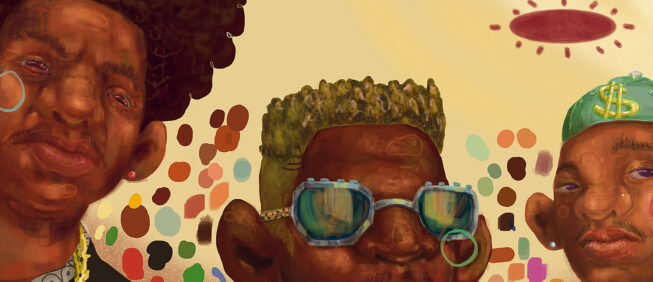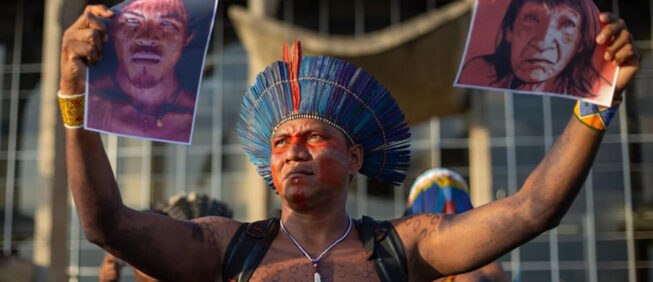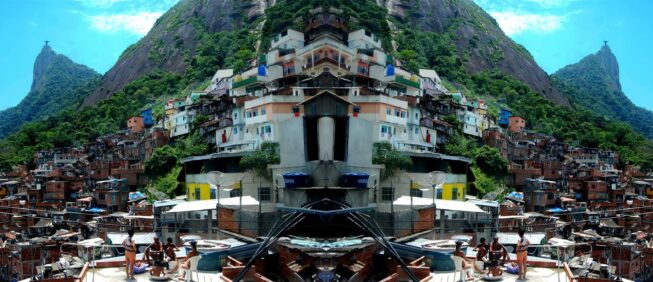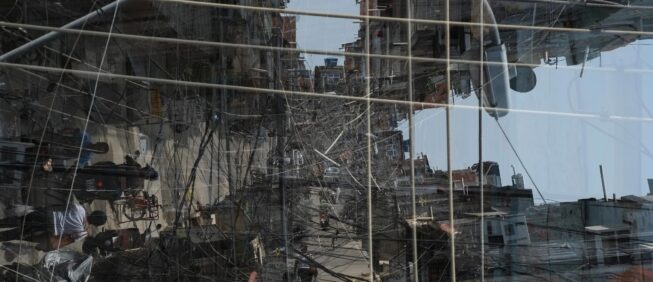“We refuse to die in prison”: Decarceration for the decolonization of Latin America
Recognizing the historical link between the penal colonies and the contemporary prison systems is a fundamental factor to disintegrate thought
Dirceu Franco Ferreira | Samuel Tracol
| Brazil | France |
January, 2023
translated by Nicole Froio, revised by Claudia Milena Pérez Guerrero
The Covid-19 pandemic started a contradictory public debate within the democratic States, between the necessity to restrain individual and collective freedoms for public health reasons and the protection of these freedoms under the rule of law. The vocabulary that has been used during the periods of lockdown refers directly to the fundamentals of the economy of bodies in a context of imprisonment. The restrictions on human mobility, social contact and most recently the imposition of sanitary passes in several countries, establish a distinction among the citizens of the same country on the exercise of their freedoms.
Since the beginning of the pandemic, in March 2020, prisons have been a ground for the expression of this political and social tension: a riot in the Rémire-Montjoly prison, in French Guiana, on 1 April 1 2020, against the government's decision to suspend visits; a demonstration on 23 April 23, 2020, in the Villa Devoto prison, in Buenos Aires, when a group of prisoners climbed the roofs of the pavilion and put up a poster that read: “We refuse to die in prison.”

In a context of widespread overcrowded prisons, where only Chile and Suriname have an occupancy rate lower than 100%, Latin American prisons are spaces under heavy tension. In Brazil, a true carceral giant with the third largest prison population in the world — the National Penitentiary Department estimated about 900,000 prisoners in June 2022. The pandemic resulted in 73,171 infected prisoners and 317 deaths. This data is considered to be underreported by the National Council of Justice.
Whereas other countries in the continent have occupancy rates of over 200% — the average number for women’s prisons in Brazil — and a degraded level of hygiene conditions — communal outdoor showers built with simple gardening pipes, latrines without curtains, reduced to a simple hole dug on the cell floor, in French Guiana, prisons have proved to be fertile ground for the dissemination of Covid-19, as well as other illnesses.
While little exchanges with the outside were taking place, prisons became clusters that favored the contamination of the surrounding areas, through the circulation of personnel, but also through the ventilation and water supply networks.
The health crisis has thus highlighted, in a chilling way, the true necropolitics experienced in prison environments. Achille Mbembé, in his unavoidable article from 2006, relates biopower — that is, from Michel Foucault's perspective, the sovereign power of the modern State to "let live or expose to death" — to the state of siege and the state of exception, which are the two characteristics of the exercise of sovereignty in a colonial context. This logic, inherent to sovereign power, has never been abandoned in the Latin American continent despite its decolonizations, and constitutes the heart of our article, in the wake of the work initiated by researchers from the Copalc group (Penitentiary Colonization of Latin America and the Caribbean, https:// copalc.hypotheses.org/)
“The purgatory of the metropolises”: the Iberian colonization via punishment
Due to the Iberian colonization and, later, the French, British and Dutch occupations, military prisons were built throughout the continent to perform strategic functions of sovereignty and economic valorization of space: in the colonial context, the disciplinary dimension of prisons described by the theories Michel Foucault's canonical works is complemented by a territorial dimension.
The use of deportees and other convicts’ labor, from the high Middle Ages to Afro-Asian decolonization, was indispensable to colonial empires. Serving a military colonization mission on the African coast or as a cultural intermediary in Portuguese America could, for example, lead to a reduction in the allotted time to serve a sentence of exile, in some cases, by up to half. Murderers convicted by Portuguese courts were landed at strategic points on the South Atlantic coasts to make contact with the native population.
If they survived and managed to be admitted as interlocutors among local communities, they were able to serve the kingdom as intermediaries, becoming indispensable for the creation of economic networks. Initially left to die, they could become useful to the interests of the colonizers.
Ronaldo Vainfas states that this practice was established, in the case of the Portuguese colonization of America, as one of the main settlement policies in the colony from 1530 onwards. Prisons defined the physical presence of the colonizer while prisoners also acted as agents of colonization.
The use of colonial space as a kind of "purgatory of the metropolis", to use Laura de Mello e Souza's expression, established a set of practices that extrapolate the political framework of colonial history in America. Colonization through punishment imposition is one of the legacies that is still little explored by Latin American historiography, yet it constitutes an important key to understanding the persistence of colonialism in post-colonial societies, notably in their marginal spaces, which were the most affected by penal colonization.
Races, peoples and nations: prison production of territory in Latin America
The nation-states that were formed in the region from the 19th century onwards did not completely break old Empire’s governmentality system. The penal colonization adopted by the European empires in the modern era has been used, by the national states of Latin America, as an instrument to consolidate their power over a population considered, under the eyes of the dominant classes, of a degenerate nature. The scientific discourse carried by tropical and colonial medicine and the nascent field of criminology legitimized the consolidation of an ideology that stigmatized popular and colonial environments: “Misery, vice and crime” came to be perceived as pathological manifestations of a criminal gene.
The thesis of the born criminal— developed by Italian scholar Cesare Lombroso and inspired by anthropometry and physical anthropology applied in the colonial environment —, found fertile ground for diffusion in the context of the consolidation of Latin American national states. Medical and legal corporations worked intensely in the formation of a people that would be the identity and civic base of the young nations, due, especially, to the characteristic heterogeneity of the population of these emancipated territories.
The stigmas of contagion and the propagation of physical and social pathologies were concentrated in the category of mestizos, then seen as heirs of a degenerate race, according to the terms of physical anthropology in vogue at the time. Brazilian hygienists at the end of the 19th century and the beginning of the 20th century had great institutional success, mainly because they understood that racial diversity had an intrinsic relationship with the problems faced in the scope of public security. In this sense, the reasons for social instability, for them, had their origin in the heterogeneous profile of the "Brazilian race".
This socio-racial segregation is enhanced by a spatial translation of this discourse. Due to its prophylactic vocation — avoiding society’s infection with the criminal gene — and curative — expiation and rehabilitation through outdoor work —, the modern economy of punishment finds in the experience of penal colonization a privileged ground for expression.
In a centrifugal movement, modern states pursue neo-Hippocratic as well as imperialist goals, purging political centers of their contaminating elements and deporting them to their shores to exercise the penalty of forced labor.
In this way, a Balkanized geography of metropolitan, colonial and post-colonial spaces is installed in a lasting way. The social frontiers of the centers are transposed to the colonial margins: marginals, criminals, incorrigibles are converted into a workforce for the benefit of the colonizing potential of punishment.
Racial assumptions strongly operate in states like Brazil, which still has 63% of racialized inmates in 2020, or even in the Guyanese penal colony, which welcomed prisoners from all over the Empire between 1852 and 1953: different food and the most punishing jobs were reserved for the non-white imprisoned population. In many ways, South America is a prison continent, both for the construction of its territory and its borders, and for the pathologization and criminalization of race and social class.
The Police State and the Bad Luck Battalions
While the colonial domination movement in the Americas slows down from the end of the 19th century, penal colonization continued to flourish, supported by the ideology of social defense that had its roots in the beginning of the 20th century. From this context, the criminal becomes a problem of biopolitical nature for the ruling classes, since the formation of a healthy society depends on its regeneration by removing its damaged parts.
If the degenerates of the European Renaissance kingdoms were, at the time of the overseas conquests, the first to be recruited to populate distant colonial territories, black people, mestizos in general, alcoholics and so-called vagabonds are placed at the forefront of the strategy of penal colonization of the young American Republics.
If in the 16th century colonization was the main task assigned to the convicts, eliminating the risk of contagion from crime in the metropolis and expanding the benefits of empires in colonial territories, in the 20th century the "new convicts" are considered a metastasis of the social body and a threat to be eliminated. The notion of expendability, developed by Clare Anderson in her work A global history of convictions and penal colonies (2019) , describes well the way in which the economic model of penitentiary colonization is based on a disposable workforce that is immediately replaceable by the arrival of a new convoy of prisoners: their lives no longer have value, even on a moral level – they were unanimously rejected from society after their conviction – or on the market level – as opposed to enslaved people.
This form of exercising sovereignty, in which certain citizens are treated as subalterns without rights, produces a national identity that ranks social groups and establishes strict limits for inclusion within the rule of law. As a part of this process, the prison plays an important role in defining entire groups as controllable subjects and submitting them to a rigorous system of dehumanization — contrary to the expectations about the functioning of justice in democratic contexts, which aims to punish crimes and offenses committed by individuals, considered in their singularities.
As Goffman thought, the delinquent is a person who has failed to avoid arrest. Thus, their identity remains indelibly marked. These “Battalions of Bad Luck” (Mac Orlan, 1933) populate the entire disciplinary apparatus, from the correctional facilities for children to the penal colonies at the top of the judicial building, during a veritable carceral career.
Additionally, in Latin America, there is a racial assumption that confines indigenous populations and Afro-descendants to a permanent state of siege, privileged victims of authoritarianism. In the nations on the periphery of capitalism, liberal modernity is expressed much more in the development of its disciplinary aspects than in its democratic benefits.
This subjection of peripheral populations must be understood in a historical continuum, because it is constantly updated. If convicts were useful to empires in their colonizing mission, prisoners from the era of mass incarceration participate in the legitimation of the police state, as defined by Zaffaroni (2011), in which sovereign power is reactivated against them, reinforcing the social, political and legal gap between the classes.
It is true that the figure of banishment towards the margins or territorial limits has disappeared, but the prison has become a form of virtual banishment, placing individuals outside the rule of law, on the edge, outside the definition inherited from the Enlightenment of human condition and the corresponding universal rights. In this sense, thinking about mass incarceration is also thinking about the dehumanization process. Inverting the positions, a program of extrication would open the possibility of a new encounter with humanity’s main values, a form of renewed discussion of the very forms of human life.
Decarcerating Latin America in the Ruins of Capitalism
It is, therefore, a matter of extricating thought by producing a global counter-discourse, an ecology of knowledge that considers the prison not only as the most complete expression of colonial and modern disciplinary society, but as its indispensable cornerstone. Based on a genealogy and a prison geography that identifies the abyssal lines (De Sousa Santos, 2007) that fracture the Americas, it will be possible to open post-abyssal horizons, where the universal will become “truly universal” (Diagne, 2017).
To abolish the prison, it will be necessary to overcome the “heterotopic legacy” (Ferdinand, 2019), that is, the set of Eurocentric corpus taken in the holds of European ships, enslaving men — indigenous and Africans, rubber tappers or coolies — and territories with the objective of precapitalist exploitation of land and work. By reappropriating the world, not only with a new economy of bodies, but placing the body as a starting point for reflection, it is a matter of inaugurating a new ecology of knowledge that opens up a possibility against the “mutilation of imaginations” that forbids the imagination of a world without inequalities, without oppression, without disciplinary institutions.
This new ecology of knowledge is based on: 1) departure from “scalable” modernity (Lowenhaupst-Tsing, 2015), as a reproduction of models and discourses which consider territories and men as white pages on which profit is built; 2) a progressive post-capitalist alternative where people unite with people, as well as with plant and animal, that is, enter the consciousness and practice of a world ship in which we are all aboard, the anti-slave ship who refused the world to those who were huddled there (Ferdinand, 2019); 3) a radical co-presence (De Sousa Santos, 2007), where knowledge and interconnection are the conditions for the emergence of a knowledge that is no longer just academic, but that recognizes the set of knowledge, contrary to a positivism on which the abyssal society and the prison ideology are based; 4- a revitalized “rebel conscience” that will allow the emergence of prisoners as an active political group, at the intersection of all forms of subalternity – social, racial and penal (Ranajit Guha, 1999).
As in the Attica rebellion or in the French prisons of the 1970s, it is the whole of bourgeois society that will then be rejected, from the segregated, anti-democratic and post-colonial bas-fonds that constitute contemporary prisons.
In short, it will be necessary to end the center-periphery binarism at the heart of the segregationist system implemented by industrial modernity or, in other words, to erase the abyss. To express it in an operative way, it will finally be a matter of overthrowing bourgeois society in a revolutionary way, as described by Franz Fanon (1952): “Any society that scleroses into certain forms, prohibiting any evolution, any march, any discovery”. Thinking of a world without prison is dizzying. However, the abolition of prison would deliver more than the freedom of detainees—it would also liberate a continent, its men and space. In other words, it’s not about developing a new social contract, but about creating a decolonial and post-capitalist ecology where man and space make “common history”.
ALVAREZ, Marcos Cesar. “A Criminologia no Brasil ou como tratar desigualmente os desiguais”, in: DADOS – Revista de Ciências Sociais, Rio de Janeiro, Vol. 45, no 4, 2002, pp. 677 a 704.
ANDERSON, C. (Éd.). (2019). A global history of convicts and penal colonies. Bloomsbury.
CUNHA, Olivia Maria Gomes da. (2002) Intenção e gesto. Pessoa, cor e a produção cotidiana da (in)diferença no Rio de Janeiro. Rio de Janeiro, Arquivo Nacional.
DARMON, Pierre. Médicos e assassinos na Belle Époque. A medicalização do crime. Rio de Janeiro: Paz e Terra, 1991.
DE SOUSA SANTOS, B. (2007). Para além do pensamento abissal: Das linhas globais a uma ecologia de saberes. Novos estudos CEBRAP, 79, 71‑94. https://doi.org/10.1590/S0101-33002007000300004
DIAGNE, S. B. (2017). Pour un universel, vraiment universel. In A. Mbembe & F. Sarr (Éds.), Ecrire l’Afrique-Monde (p. 71‑78). Philippe Rey/ Jimsaan.
FANON, F. (1952). Peau noire, masques blancs. Seuil.
FERDINAND, M. (2019). Une écologie décoloniale. Penser l’écologie depuis le monde caribéen. Seuil.
FERLA, Luis. Feios, sujos e malvados sob medida. São Paulo: Alameda, 2009.
FOUCAULT, M. (1975). Surveiller et punir. Naissance de la prison. Gallimard.
GOFFMAN, E., (2001) Manicômios, prisões e conventos. São Paulo: Ed. Perspectiva.
GUHA, Ranajit. Elementary Aspects of Peasant Insurgency in Colonial India, Oxford University Press, Delhi, 1983, New edition: Duke Univ Press, 1999.
LOWENHAUPT-TSING, A. (2017). Le Champignon de la fin du monde : Sur la possibilité de vivre dans les ruines du capitalisme. La Découverte.
MAC ORLAN, P. (1933). Les bataillons de la mauvaise chance. Editions de France.
MBEMBE, A. (2006). Nécropolitique. Raisons politiques, no 21(1), 29‑60.
PEIRETTI-COURTIS Delphine, Corps noirs et médecins blancs, La fabrique du préjugé racial, XIXè-XXè siècles, Paris, La Découverte, 2020.
SOUZA, Laura de Mello e. O diabo e a Terra de Santa Cruz. São Paulo: Companhia das Letras, 1986.
VAINFAS, Ronaldo. “Degredo”. In: VAINFAS, Ronaldo (org.). Dicionário do Brasil Colonial (1500-1808). Rio de Janeiro: Objetiva, 2001.
ZAFFARONI, Eugenio Raúl. (2011) O inimigo no direito penal. Tradução de Sérgio Lamarão. 3.ed. Rio de Janeiro: Revan.

Dirceu Franco Ferreira | BRAZIL |
Historian and dedicated to the study of the history of prisons. He is a founding member of the COPALC Group - Prison Colonization in Latin America and the Caribbean.
dirceufranco@yahoo.com
Samuel Tracol | FRANCE |
Professor of contemporary history , PhD student at the Sorbonne Université (France). is a founding member of the group of young researchers CoPALC (Prison Colonization in Latin America and the Caribbean)
